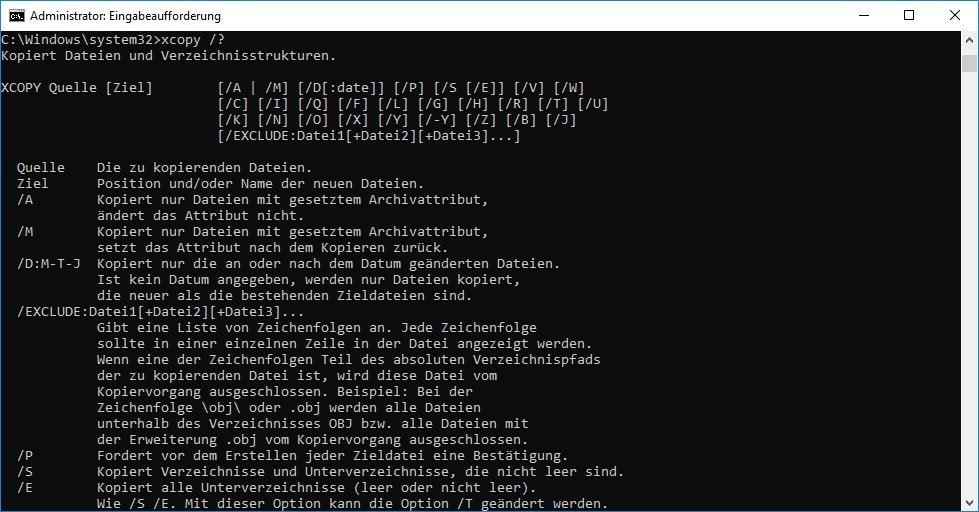
Still, again Robocopy takes the cake here by taking it way beyond by supporting overall copy attributes that include timestamps security, owner, and other auditing info.Īs we know, these little attributes help us maintain a proper directory structure, mainly when you're working as an administrator.
Xcopy to compare folders archive#
Robocopy: Attributesīoth XCopy and Robocopy support copying over the files archive and attribute in the case of file attributes. On the other hand, Xcopy has no monitoring support whatsoever. It is similar to periodically saving a file while continuously working on it with much more efficiency. Several other commands have different purposes like "/MOT:m" that check the file after every "m" specified minutes for any changes and then copy it wherever they are. "/MON" or "/MOT" commands are supported and used in Robocopy for directory monitoring. It also contains logging with the /LOG:file option. The process will be present under the name of robocopy.exe in the task list. The process will be present in the task list as it constantly checks the clock to see when to copy the files. Robocopy uses an option called "Run Hours" (/RH) that allows you to set when the requested copies should be processed instead of the time of the command as with XCopy. Robocopy: AutomationĪutomation is useful when there's a need to create daily backups or large amounts of batch jobs that require a significant amount of time but little to no interaction. The difference between transferring speed of both Robocopy and Copy has a significant amount of difference in favor of Robocopy. Hence, we recommend using Robocopy instead of the copy command if you plan to copy many files. It is because Robocopy uses several simultaneous threads for copying the files.

Robocopy is much faster than the standard Copy command.

XCopy does none of those things that are mentioned above about mirroring. In return, it will save time by not copying unchanged files.

It also checks for the files in the target directory against the files about to be copied. So instead of copying the total amount of files directly from one directory to another, Robocopy checks the destination directory first and removes all the files that are no longer present in the main tree. It is used to mirror or synchronize directories. Robocopy uses Mirroring, but XCopy does not use it. We'll compare them strictly on that basis.
Xcopy to compare folders windows#
However, there are several aspects to it when it comes to copying Windows File and Windows Backup utility. Both are command-line tools that are often used in file transferring. Support Windows 11/10/8/7 Comparison Of XCopy And RobocopyĪs we've stated above all the generic details about Xcopy and Robocopy, here is the comparison between them to specify which one you should use while performing those operations.

Copies all encrypted files in EFS RAW mode.Remove files in the destination folders that don't exist in the root folder.It can pre-determine to cope with conflicting file names.Here is the list of features offered by Robocopy: Supported OS: Windows NT 4 and later i.e. It genuinely works as XCopy but grants more advanced features to its users.įirstly introduced as a part of Windows NT 4.0 Resource Kit, since available for all the Windows versions since Vista and Windows Server 2008. It is a command-line directory or replication command for Microsoft Windows. It shares various similarities with XCcpy but goes one step further in terms of functionality. Exclude files based on extension and file names.Here is the list of some significant features that XCopy offers.
Xcopy to compare folders Pc#
Supported OS: IBM PC DOS, MS-DOS, IBM OS/2, Microsoft Windows, FreeDOS, ReactOS are the operating systems that support the XCopy command. It is also a built-in command in Windows OS, which is more advanced than the traditional 'Copy' command. In general, XCopy is a command used in computing for copying several files and entire directories from one to another or across a network as per need.


 0 kommentar(er)
0 kommentar(er)
